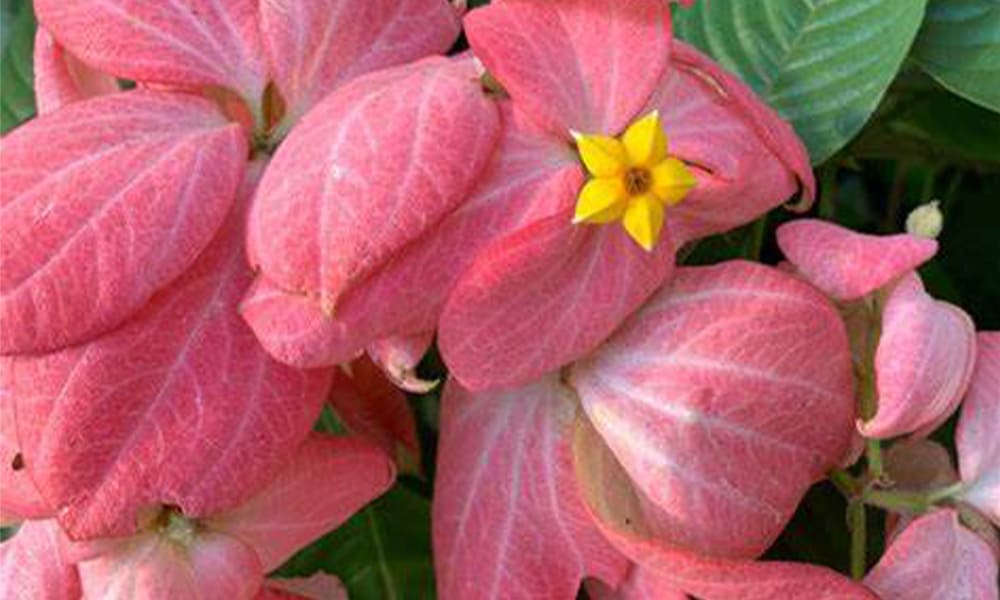Here’s an ornamental that’s a big hit in Costa Rica: pink flag (Mussaenda erythrophylla), which locals refer to as moño de señora, literally “lady’s hair bun.”
It’s interesting how plants are distributed through the country in a “grassroots” way.
A few years ago, this plant was practically nonexistent in Costa Rica. How it arrived here is hard to say; perhaps nursery owners or even a home gardener introduced it. One thing is sure: Costa Ricans love it.
A member of the Rubiaceae family, mussaenda (pronounced mus-SEEN-da) is a native of Africa, but it has been a world-class ornamental in tropical zones around the world for a long time. Coffee, gardenia and ixora are related to the mussaenda. There are two major varieties, red and pink, and several related species. M. glabra is yellow, while M. philippica is white. These two are still sparse in Costa Rica.
All of these plants have unique leaf structures called sepals that surround inconspicuous little flowers. In other words, what appear to be flowers are actually multicolored leaves. Another plant with the same characteristic is the famous poinsettia.
The small flowers don’t produce viable seeds, so the main method of propagation is by stem cuttings. These are planted in cups or pots of prepared potting soil and kept moist in the greenhouse or indoors until they root and sprout new foliage.
This brings us back to how these plants became widely dispersed as popular ornamentals.
A strong tradition in Costa Rica is the sharing of plants among neighbors. When neighbors or friends visit, it’s common to make a gift of seeds, cuttings or offshoots of plants from the garden. Here, they call these gifts hijos, or “children.”
I remember how my gardener became the first proud owner of a pink flag in our neighborhood. He told me he had acquired the cutting from relatives in San Vito, a mountain town in southern Costa Rica; perhaps the plant originated from the famous Wilson Botanical Garden there. At any rate, it wasn’t too long before I and most of my neighbors had handsome pink flags in our gardens.
Of course, you’ll find these plants in most nurseries across the country – but remember, you may be able to acquire a cutting from a neighbor. Exchanging plants is a great way to bridge cultural differences and keep a close connection with the neighbors.
By the way, it’s customary to bring a new plant to your neighbor, too.
Pink flag is a hardy bush with few pest or disease problems. It does well in a wide range of soils, provided it has good drainage.
Applications of compost fertilizers and natural foliar sprays help keep them growing strong and blooming well, while occasional pruning keeps the bushes from becoming too tall and gangly.
If you’re looking for an ornamental to liven up your garden with a touch of pink, mussaenda may be the answer.

